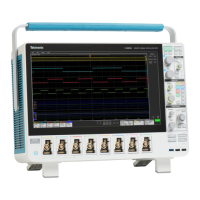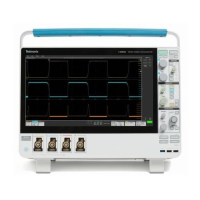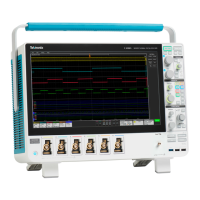Pinpoint Trigge
rs
5. Click the Edit button to set the pattern
and format that you want to trigger on.
6. Set the pattern to trigger on using the
keypad.
7. Analyze your waveforms.
82 MSO70000/C, DPO/DSA70000B/C, DPO7000, and MSO/DP O5000 Series U ser M anual
